The incredible power needed to lift a garage door that weighs hundreds of pounds all comes from its springs. That stored energy is exactly what makes them one of the most hazardous parts of any home. If a spring suddenly fails, all that force is released in an instant, creating serious dangers of garage door springs that can lead to severe injury or major property damage.
Understanding this hidden force is the first step toward respecting the risks involved.
The Hidden Power Coiled in Your Garage
Your garage door opener might seem like it does all the work, but it’s not the main source of power. The real muscle is the spring system. It works like a tightly wound catapult, constantly holding back a massive amount of energy. It’s this stored tension that counterbalances the door's huge weight, letting it open and close without a struggle.
Think of it like drawing back the string on a powerful bow. The further you pull it, the more potential energy you build up. Garage door springs work on the same principle, just on a much bigger and more dangerous scale. They are stretched or wound under incredible tension, ready to turn that potential energy into movement at a moment's notice.
This image really drives home just how much "hidden power" is waiting inside this simple-looking mechanism.
As you can see, the spring—not the motor—is doing the heavy lifting. That's why its condition is so critical for safe operation. All that pent-up energy is precisely why you need a professional to handle it; one small mistake can be catastrophic.
Why This Stored Energy Is So Dangerous
When a spring is working correctly, all that energy is controlled and helpful. But when it fails, that force is unleashed in a chaotic, violent burst. A snap can cause the heavy door to crash down without warning, creating a terrifying crushing hazard.
The sudden, explosive release of a breaking spring can turn metal components into high-velocity projectiles, capable of causing devastating damage to anything—or anyone—in their path.
This violent release of force is the number one reason why you should never, ever try to adjust or replace garage door springs yourself. While you can learn some basic garage door maintenance tips for safer parts of your system, the springs themselves demand specialized knowledge and tools. The risks are just too high.
Torsion vs Extension Springs What You Need to Know
Not all garage door springs are created equal. The system you have is the first step in understanding the specific dangers of garage door springs lurking in your home. The two main players are torsion springs and extension springs, and each one fails in its own unique way.
Knowing which type you're dealing with is a crucial piece of the safety puzzle.
Torsion springs are what you'll find in most modern homes. They are large, tightly wound coils mounted on a metal shaft right above the garage door opening. Instead of stretching, these springs work by twisting—applying torque—to lift the door. As the door goes down, cables wind the spring tighter, storing up a massive amount of energy for the next lift.
Extension springs, on the other hand, are more common on older or lighter doors. You’ll find these running parallel to the horizontal tracks on either side of the door. Think of them as giant, high-tension rubber bands that stretch out to store energy when the door closes and contract to help lift it.
Identifying Key Safety Differences
The number one danger with a torsion spring is the immense rotational energy it holds. When one breaks, it usually snaps in one spot. While the shaft typically keeps the broken pieces from flying, the sudden release of energy is incredibly powerful. It can snap cables or cause the door to slam shut in an instant. This is why you should never try to adjust one yourself.
Extension springs pose a totally different kind of threat.
When an extension spring breaks under tension, it can transform into a high-speed projectile. It can whip across your garage with enough force to cause serious injury or punch a hole through your wall. This uncontrolled release is one of the biggest dangers homeowners face.
To prevent this, modern setups must include a safety cable running through the center of each spring. This simple part is a lifesaver—it’s designed to contain a broken spring and stop it from flying. If your extension springs don't have these cables, they are a significant hazard.
Let's break down the core differences between these two systems.
Torsion vs Extension Springs A Quick Comparison
Here's a quick look at how torsion and extension springs stack up against each other, highlighting their location, lifespan, and key safety features.
| Feature | Torsion Springs | Extension Springs |
|---|---|---|
| Location | Mounted on a shaft above the door | Located on both sides, parallel to the tracks |
| Mechanism | Twists (torque) to lift and lower | Stretches and contracts to lift |
| Lifespan | 10,000 to 20,000 cycles (longer lasting) | 5,000 to 10,000 cycles (shorter lifespan) |
| Key Safety Feature | Contained on the torsion shaft | Requires safety cables to prevent flying parts |
Understanding these distinctions helps you recognize the warning signs and appreciate why professional handling is non-negotiable for both types.
Why Your Spring Type Matters
Knowing whether you have torsion or extension springs helps you spot trouble early. For example, a visible gap in a torsion spring is a dead giveaway that it has snapped.
While you should never attempt a DIY repair on either type, being familiar with your system helps you make smart decisions when something goes wrong. If you want to understand why this job is strictly for the pros, our guide on how to change garage door torsion springs breaks down the complex and dangerous steps involved.
When a Spring Fails: The Unseen Dangers
That coiled spring on your garage door is a powerhouse of stored energy, quietly doing the heavy lifting day in and day out. But when that spring fails, all that pent-up force is released in a split second. This isn't a gentle unwinding—it's a violent, explosive event that shows just how real the dangers of garage door springs can be.
Think about the sheer power needed to lift a 300-pound door off the ground. Now, imagine all of that energy being unleashed in an instant. That’s what happens when a spring snaps.
The Physics of a Catastrophe
When a spring breaks, it doesn’t just fall apart; it shatters. The metal coils instantly become high-velocity shrapnel, flying with enough force to punch through drywall, shatter a car window, or cause devastating personal injury. In a blink, your garage becomes an unpredictable hazard zone.
At the same time, the garage door loses its only support system. Without the spring to counterbalance its massive weight, the door can come crashing down with crushing force. Anyone or anything in its path is at risk of being trapped underneath, a situation that can lead to life-altering injuries or far worse.
The dual threat of flying metal and a free-falling door makes a broken spring one of the most acute dangers in any home. It’s a sudden, powerful event that leaves absolutely no time to react.
The risk is so significant that it’s a major concern for home safety experts. Roughly 35,000 people are injured by garage doors every year, and failing springs are a primary culprit. These springs are under extreme tension, holding up doors that can weigh over 400 pounds. When they break or are mishandled during a DIY attempt, the results can be horrific, causing deep cuts and even open globe injuries (OGI), as documented in cases where people suffered permanent eye damage trying to do their own repairs. You can read more about these specific injury risks in this detailed case series analysis.
Severe Injuries from Spring Failures
The kinds of injuries that come from a spring failure are brutal and highlight exactly why every single safety expert in the industry warns against DIY repairs. The stakes are just too high.
- Deep Lacerations and Puncture Wounds: Flying spring fragments can slice through skin and muscle like a knife.
- Broken Bones and Crushing Injuries: The sheer force of a falling door can easily fracture bones or cause severe crushing trauma.
- Permanent Eye Damage or Blindness: A small piece of metal flying at high speed can cause irreversible damage if it hits an eye.
- Head and Neck Trauma: A falling door or a recoiling cable can lead to concussions and other serious injuries to the head and neck.
These aren't minor scrapes or bruises; they are life-changing events that happen without warning. This is why knowing the early signs of a failing spring—and leaving any and all repairs to trained professionals—isn't just a recommendation. It’s an absolute necessity for your safety.
Warning Signs of a Failing Garage Door Spring
A catastrophic spring failure rarely happens out of the blue. By learning to spot the subtle (and not-so-subtle) signs of wear, you can address the dangers of garage door springs before you’re stuck with an emergency. Think of it as a health check-up for the hardest-working part of your garage.
Paying attention to these signals is the most important step you can take to prevent a dangerous accident. If you notice any of the following signs, stop using the door immediately and call a professional.
Visual and Auditory Clues
Your first line of defense is simply using your eyes and ears. These symptoms are often the clearest indicators that your springs are under immense stress or have already given out.
- A Visible Gap in the Spring: This is the most obvious sign of a broken torsion spring. Take a look at the spring mounted above your door; if you see a separation of about two inches in the coils, it has snapped.
- A Loud "Bang" from the Garage: Many homeowners describe the sound of a spring breaking as being similar to a gunshot. That startling noise is the sound of all that stored energy being released violently at once.
- Stretched or Deformed Springs: If you have extension springs (which run alongside the horizontal tracks), inspect them for signs of wear. They shouldn't look elongated, warped, or have gaps between the coils when the door is down.
Operational Red Flags
How your door behaves is another critical clue. When springs start to fail, they can no longer properly counterbalance the door's massive weight, leading to very noticeable performance issues. Your garage door opener isn't designed to lift the full weight of the door, and forcing it to do so can quickly burn out the motor.
A common misconception is that the automatic opener does all the heavy lifting. In reality, a properly balanced door should be easy to lift by hand. If you disengage the opener and the door feels incredibly heavy, your springs are no longer doing their job.
This imbalance is a serious safety concern. The extra strain on other components can cause further damage, turning a single point of failure into a system-wide problem. Consistent observation through regular inspections can reduce the need for garage door spring repair by catching these issues early on.
These operational warnings are your system's way of telling you it's struggling:
- Jerky or Uneven Movements: The door should open and close in one smooth motion. If it shudders, jerks, or looks crooked as it moves, it's a sign that the springs are providing inconsistent tension.
- The Door Closes Too Fast: If the door slams down instead of closing gently, the springs have lost their ability to control the descent. This creates a significant crushing hazard and is a huge red flag.
Recognizing these signs is vital because garage door spring accidents are a leading cause of severe injuries for both professionals and homeowners who attempt DIY repairs. In fact, statistics from the Door and Access Systems Manufacturers Association (DASMA) show that spring-related incidents account for a staggering 47% of serious injuries or fatalities among professional installers, highlighting the inherent risks involved.
Why Spring Repair Is a Job for Professionals
Trying to fix a garage door spring yourself is more than just a tricky DIY project—it’s a dangerous gamble with your safety. The incredible energy wound up in those springs demands respect, specialized tools, and a ton of know-how. This isn’t just a friendly suggestion; it’s a critical safety warning that highlights the true dangers of garage door springs.
Your average home toolkit just won’t cut it for this job. Professionals come equipped with specialized winding bars—solid steel rods made specifically for safely adding or releasing the massive tension in a torsion spring. Grabbing a substitute like a screwdriver or a piece of rebar is a recipe for disaster. Those tools can easily slip or even shatter under the torque, causing the spring to snap back violently and launch the tool with lethal force.
The Need for Precision and Expertise
Beyond just having the right gear, professional technicians bring years of critical expertise to the table. Replacing a spring isn't as simple as just swapping an old part for a new one. It involves a series of precise calculations to guarantee the new spring is the perfect match for your door.
This process includes:
- Accurately weighing the garage door to figure out the exact lift requirement.
- Measuring the wire diameter, coil length, and inside diameter of the old spring.
- Calculating the correct spring wind to achieve a perfect, effortless balance.
Get any of these calculations wrong, and you've got immediate problems. A spring that's too powerful can make the door fly open on its own, while an underpowered one will burn out your opener motor and leave you with a dangerously heavy door that’s nearly impossible to lift by hand.
Simply put, guessing is not an option. The precision required to balance a door weighing hundreds of pounds is something only trained and experienced professionals can provide, a key reason why garage door repair should be left to the experts.
The Statistical Reality of DIY Risks
These aren't just hypothetical warnings; the numbers tell a sobering story. Every year, more than 300 people suffer injuries from broken garage door springs or from trying to fix them on their own. This just goes to show how easy it is to underestimate the forces at play.
Even worse, U.S. Census Bureau data reveals an average of 42 garage door injuries each year between 2018 and 2022, with fingers and heads being the most common casualties. You can learn more about these safety statistics and what causes garage door-related injuries.
The data paints a clear picture: this is a hazardous job. The specialized tools, exact calculations, and hands-on experience of a trained technician are the only safe way to handle it. Protecting yourself, your family, and your property means leaving spring repair to those who know how to manage the risks safely and effectively.
Common Questions About Garage Door Spring Safety
Knowing the theory behind spring safety is one thing, but homeowners usually have more practical questions about how long parts last, what they can do themselves, and what to do when something goes wrong. Getting clear answers to these questions will help you feel more confident and make safer decisions for your home.
Here are some of the most common questions we hear from homeowners, along with straightforward answers.
How Long Do Garage Door Springs Last?
Most standard garage door springs are rated for 10,000 cycles—with one cycle being a single open-and-close sequence. For the average family, that usually works out to about seven to ten years of use.
But that's just an estimate. High humidity can cause rust, extreme temperature swings add stress, and heavy daily use will wear them out faster. It’s always better to watch for physical signs of wear and tear instead of just relying on age.
What Should I Do if I Hear a Loud Bang?
A sudden, sharp "bang" from your garage is the classic, unmistakable sound of a spring snapping under tension. Some people even mistake it for a gunshot. If you hear this, your first priority is safety.
Do not try to open the door with the remote or by hand. From a safe distance, take a look at the spring system above the door. If a torsion spring broke, you'll likely see a clean, two-inch gap in the coils. Unplug the opener to make sure no one tries to use it, and call a qualified technician right away.
That loud bang is the sound of hundreds of pounds of stored energy releasing in an instant. It’s a violent event and a clear warning that the system is broken and extremely dangerous.
Can I Still Open My Garage Door with a Broken Spring?
Trying to open a garage door with a broken spring is not only incredibly difficult but also a serious safety risk. The springs are what do the heavy lifting, so without them, you'd be trying to lift the door's entire dead weight—often 300 to 400 pounds or more.
Forcing the automatic opener will almost certainly burn out its motor and strip the gears. Trying to lift it yourself puts you at risk of a severe back injury, muscle strain, or worse—if you lose your grip, the door will come crashing down. The only safe move is to leave the door closed and wait for a professional.
Is There Any Safe DIY Maintenance I Can Do?
Yes, but your role is limited to basic upkeep, not hands-on repairs or adjustments. There’s really only one maintenance task a homeowner can safely perform to help extend the life of their springs.
- Lubrication: A few times a year, spray a silicone-based or garage-door-specific lubricant on the springs. This simple step reduces friction as the coils move and helps prevent rust, which weakens the metal over time.
That's it. Never try to adjust the tension, move brackets, or touch the cables yourself. The tension in those components is dangerously high, and it's just not worth the risk.
When it comes to the very real dangers of garage door springs, there’s no substitute for professional expertise. For safe, reliable service and the peace of mind that comes with it, trust the experienced technicians at Security Door Gate and Fence to handle all your repair and maintenance needs. Contact us today to make sure your system is operating safely and effectively.


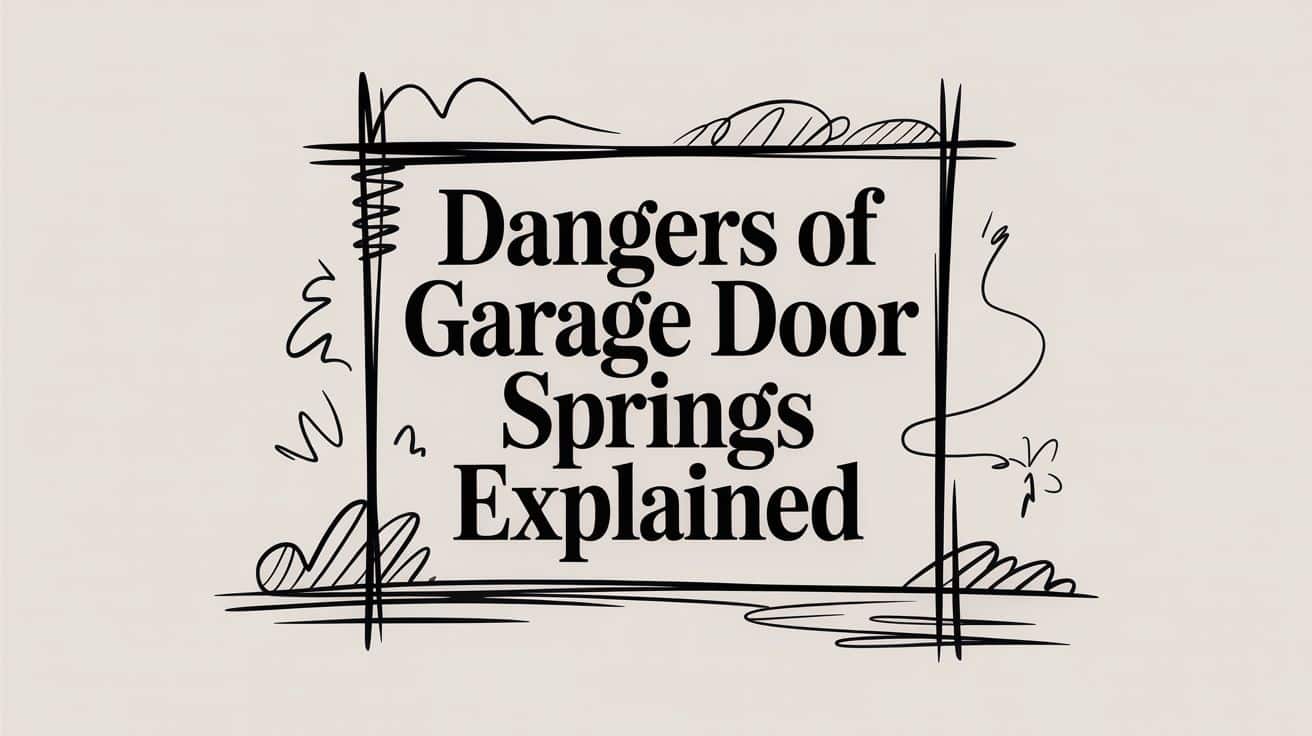
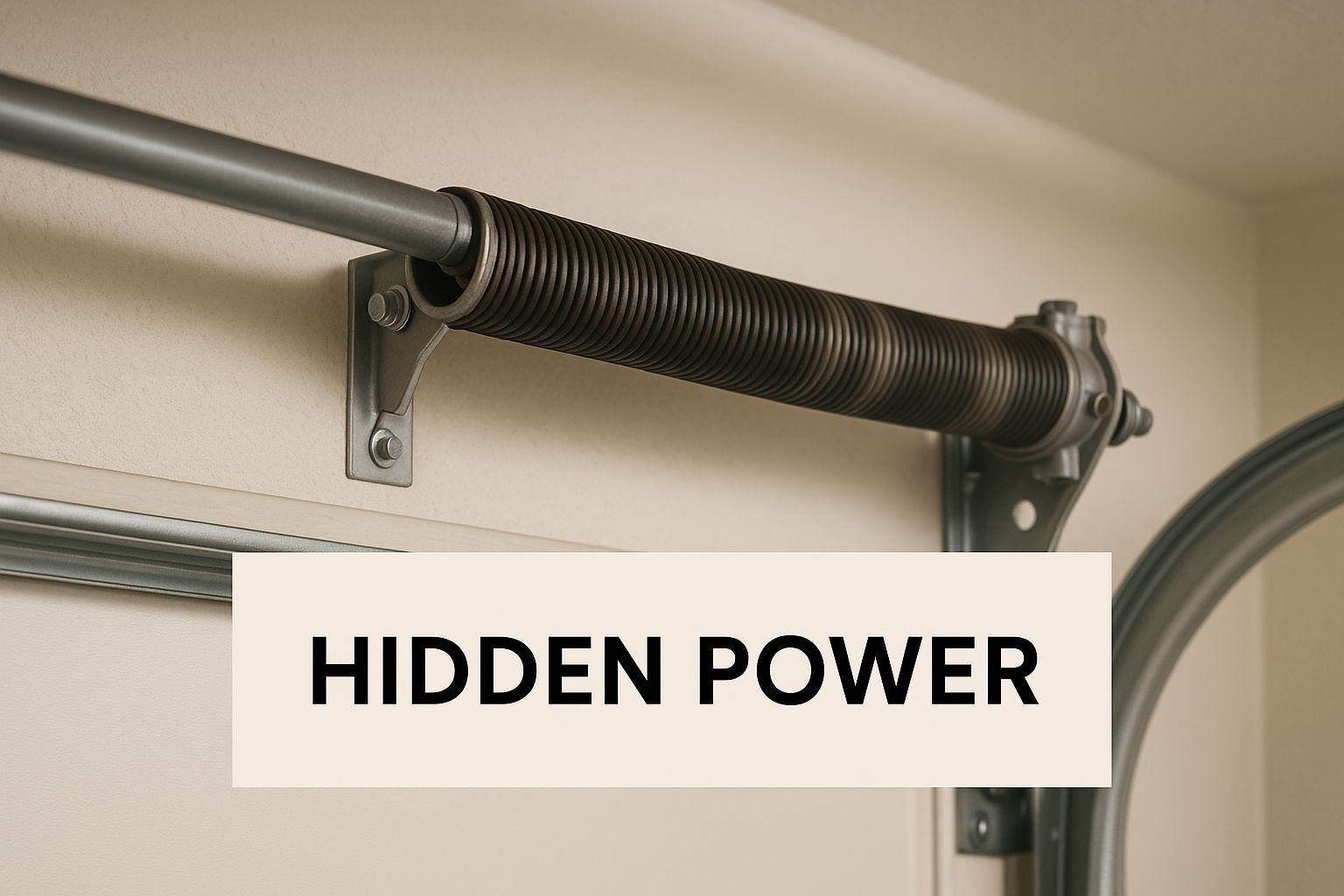
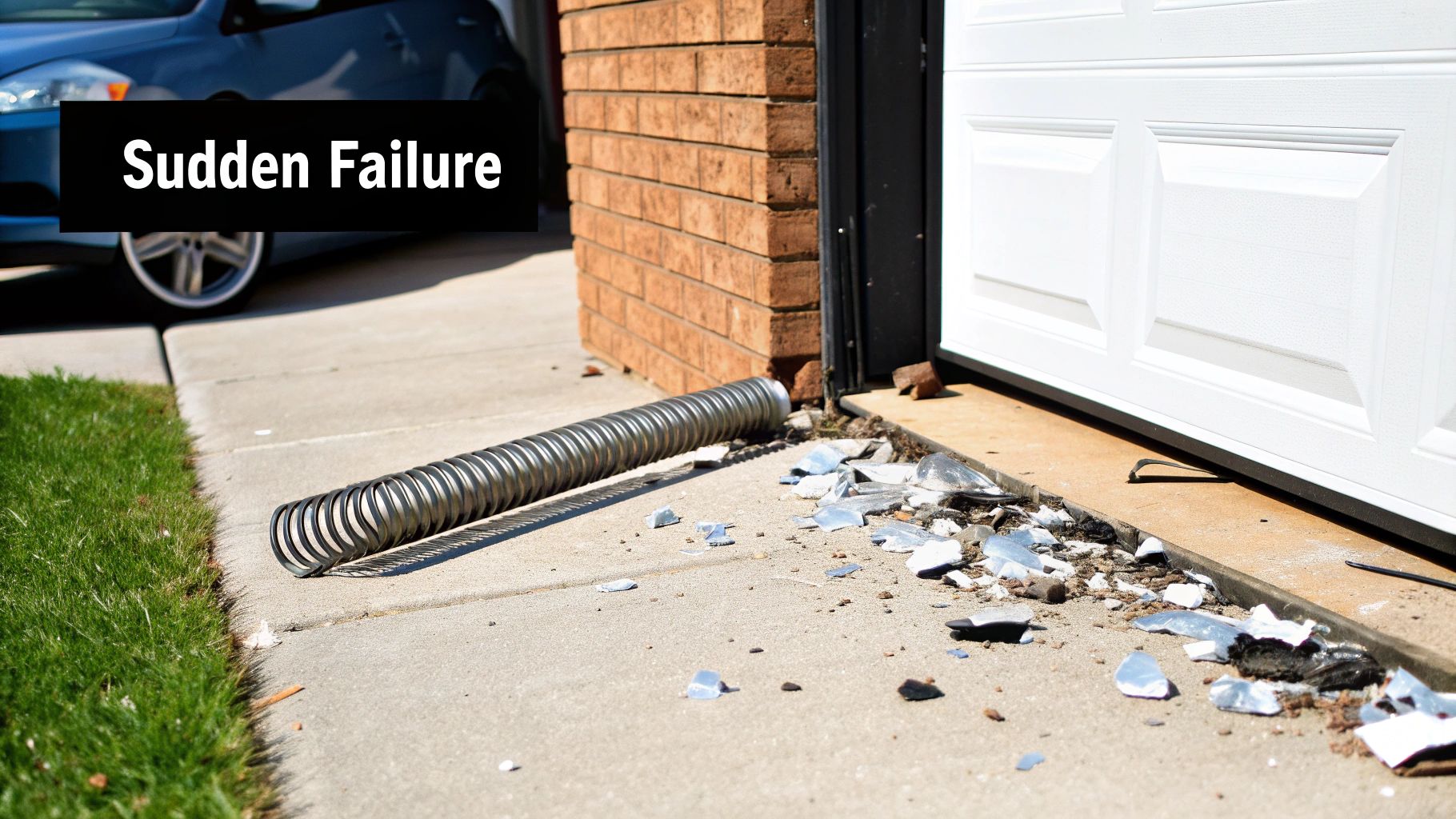
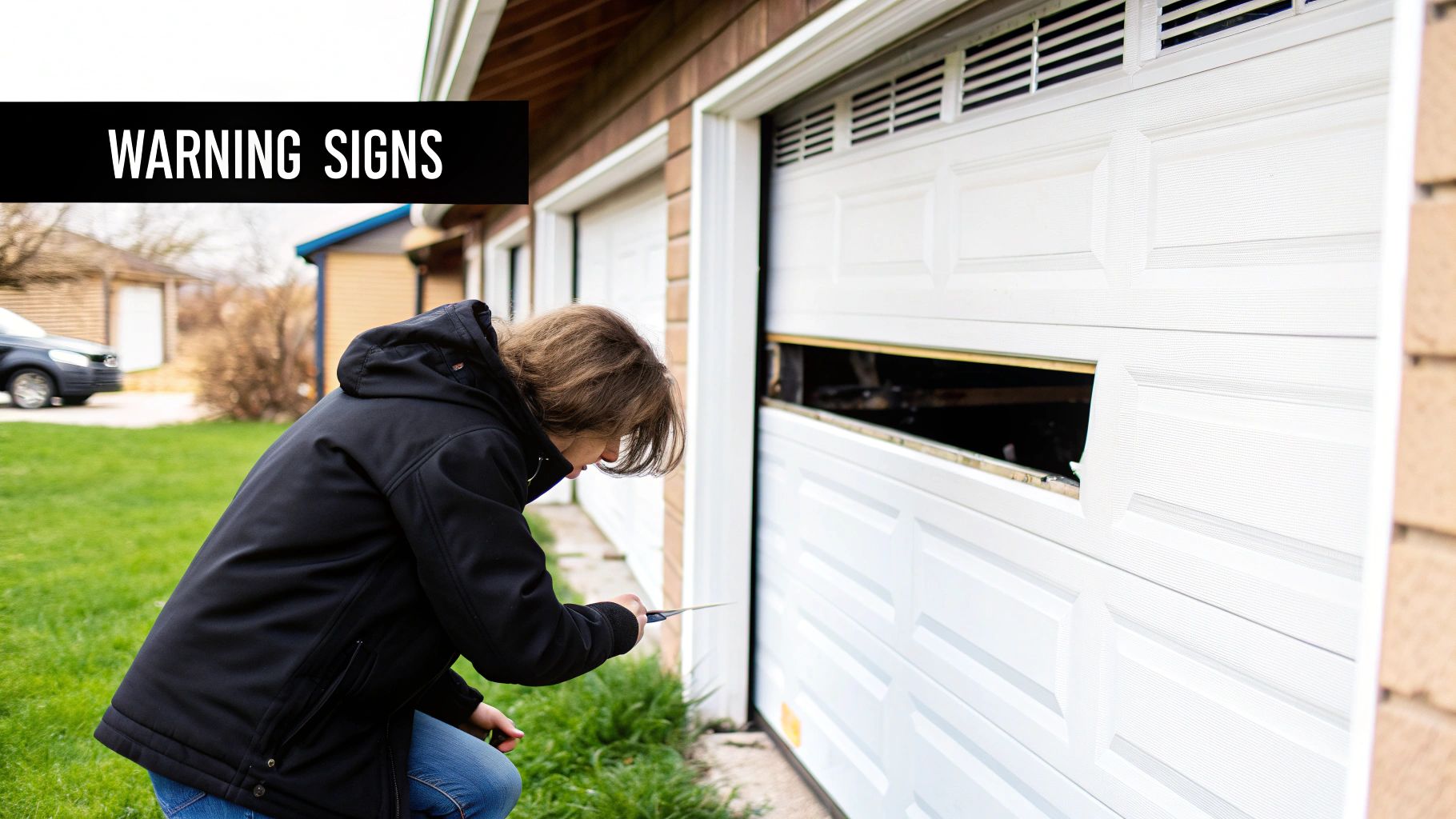
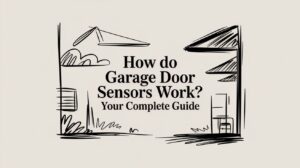
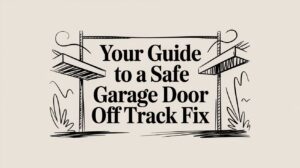


 (480) 548-0807
(480) 548-0807